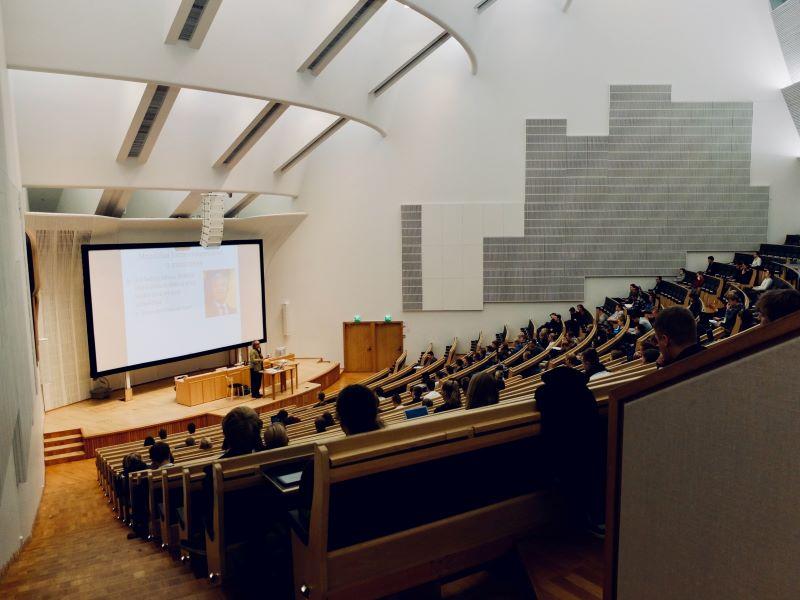Flexibility in learning is no longer a luxury but a necessity. The activeflex model, which focuses on delivering active learning via a modified hyflex model, allows for maximum flexibility, which modern students value. Activeflex courses provide students with the opportunity to attend class in various formats and engage with different instructors at multiple times. This allows students to learn in the format that best suits their schedule and preferred learning modality each week. While there are logistical challenges involved in managing multiple sections and multiple faculty on an activeflex course, incorporating the following best practices aids efficiency, reducing academics’ workloads and limiting frustrations for students and staff.
- The evolution of activeflex learning: why and how
- Classroom management strategies to enhance hyflex learning
- Lessons in motivating students to learn online
Keep course shells consistent
Establishing uniformity across all the sections of any given activeflex course supports clear communication and consistent expectations. Students, regardless of modality or section they are taking, can work together to complete the active learning activities that take place during the live section. Because students are accessing identical course shells, they are still able to collaborate and offer peer support. The use of identical course shells ensures that instructors can answer navigational questions without having access to each other’s courses.
Use dynamic documents
In a multi-section course, students have the freedom to attend the class modality that best fits their schedules from week to week. For this to work smoothly, instructors in all sections of the course must communicate the same information, such as dates and times for weekly live sessions and virtual meeting links. Using a shared dynamic document, such as Google Docs, to house this information is ideal because updates can be made in real time, eliminating the need to modify information in multiple places.
Automate attendance
Since the activeflex model is dependent on the instructors in each section of the course providing the same content and the same assignments, it is necessary to keep the labelling and access consistent across all course sections. For example, a common quiz password can be used to automate attendance reporting, so students who attend a live session receive the instructor’s password to a locked quiz. The submission of this quiz serves as verification of their attendance and triggers the proper course materials to release. Because each course uses the same password, students can complete the quiz and receive credit for attending any of the live meetings. And, because the password changes for each week’s attendance quiz (but is consistent across each section), students must attend one of the synchronous sessions to receive the password and credit for attending. Asynchronous students are required to complete a lecture summary, which shows that they watched the recorded lectures for the week and ensures that each modality offers an equal experience for students.
Implement a tardy policy for virtual synchronous classes
It is important to establish rapport with students to increase intrinsic motivation and engagement regardless of their modality. Due to the nature of virtual meetings, students are sometimes less punctual than they would be in face-to-face classes. To ensure students do not miss important content, instructors need to set a clear expectation for students to arrive at class on time. Many meeting platforms have a setting where admittance can be declined after a certain time period. While it is tempting to take a lenient attitude toward virtual attendance, students often need all the information delivered in their lectures to successfully complete the post-lecture activity.
Establish instructor communication
Frequent communication among the instructors, especially during the first couple of weeks, is needed to ensure everyone stays on the same page. Instructors should meet once a week to discuss concerns and issues as well as successes. A discussion around student performance on assessments can help instructors shape their teaching strategies to fill any gaps in understanding and help students build on prior knowledge. Course support personnel such as instructional designers should also be included in these meetings. This allows for a comprehensive view of the course so it can be refined for future semesters. The collaboration of educators, as well as instructional designers, ensures that all areas of teaching and course design are evaluated and supported.
A collaborative success story
The activeflex model gives students more control of their learning through flexible course delivery and active, collaborative, and student-centred learning activities. In courses with multiple sections, students can work with peers outside their individual course section, establishing a greater sense of community among all course participants. While bringing together multiple instructors to feed into a single course offering creates inevitable challenges, many of the most common can be avoided through clear, regular communication, establishing uniformity across course shells, and automating processes where possible.
Morgan Stanford is a faculty development specialist and instructional designer at Athens State University.
If you found this interesting and want advice and insight from academics and university staff delivered direct to your inbox each week, sign up for the THE Campus newsletter.




comment